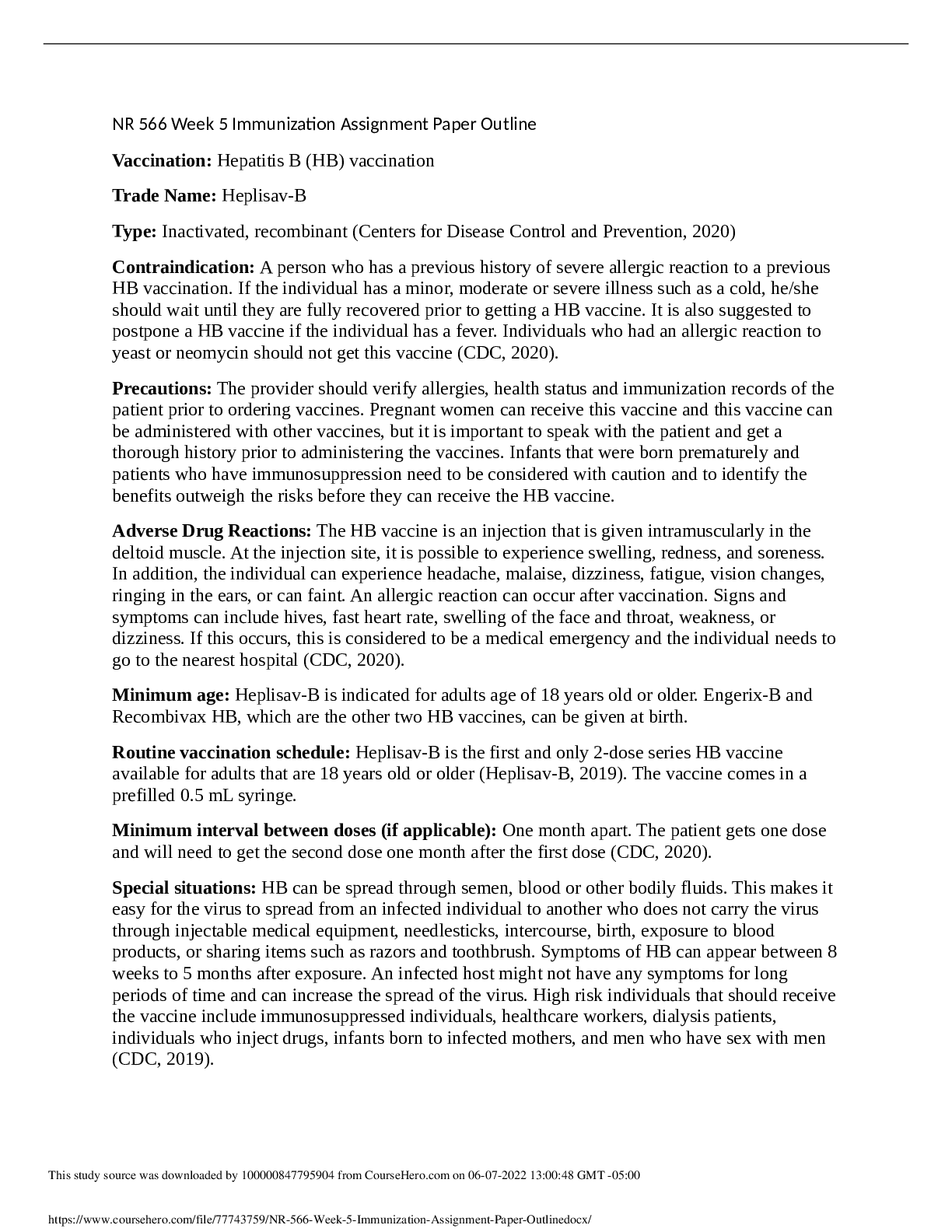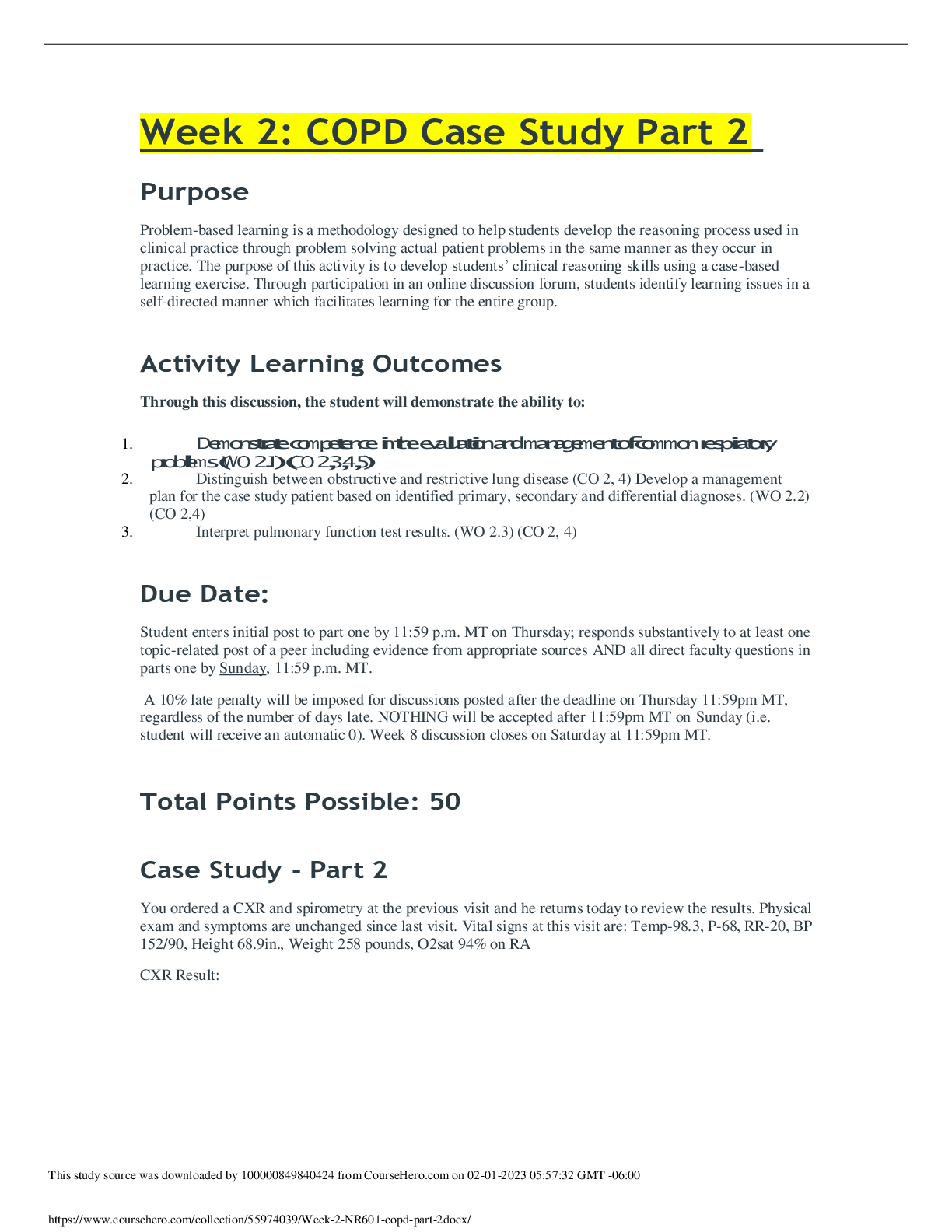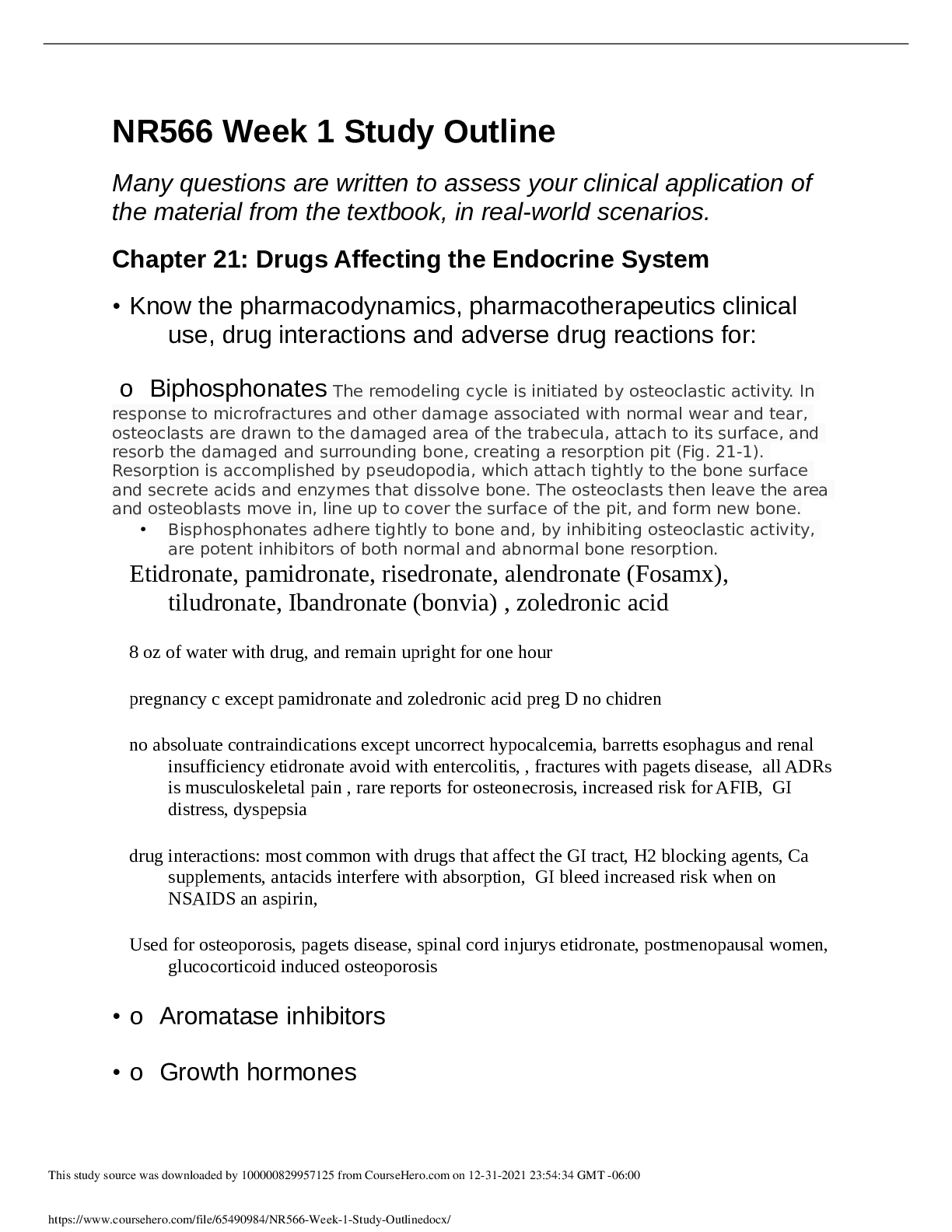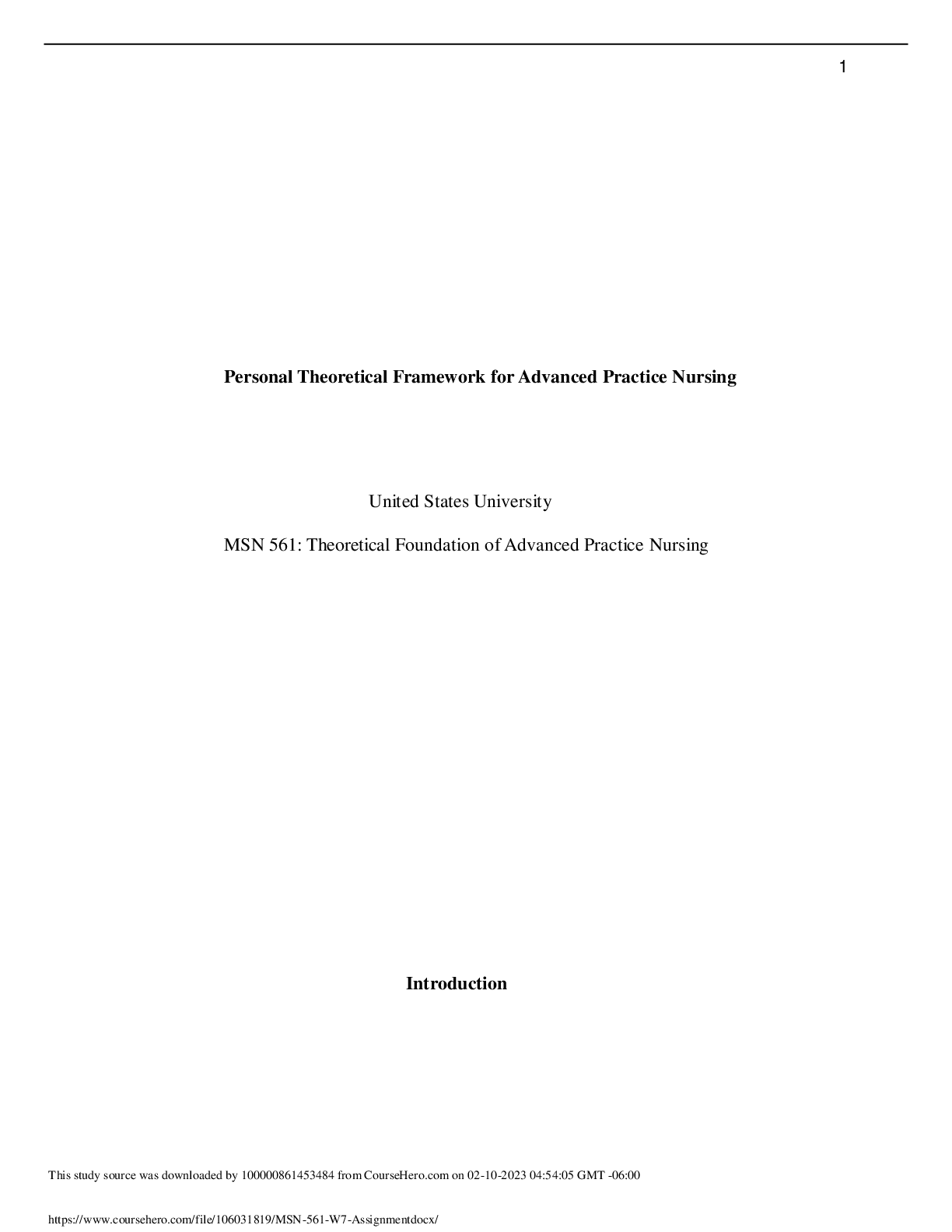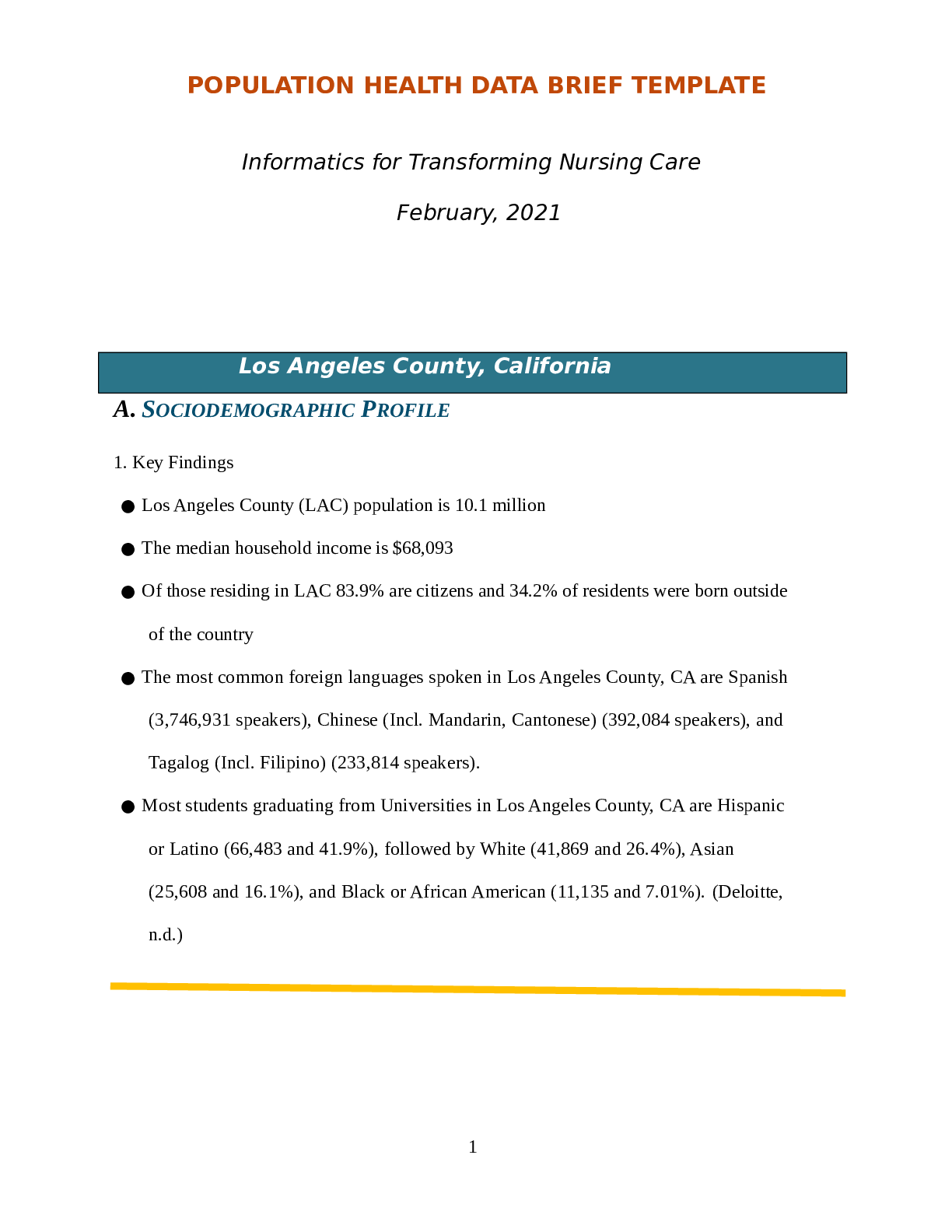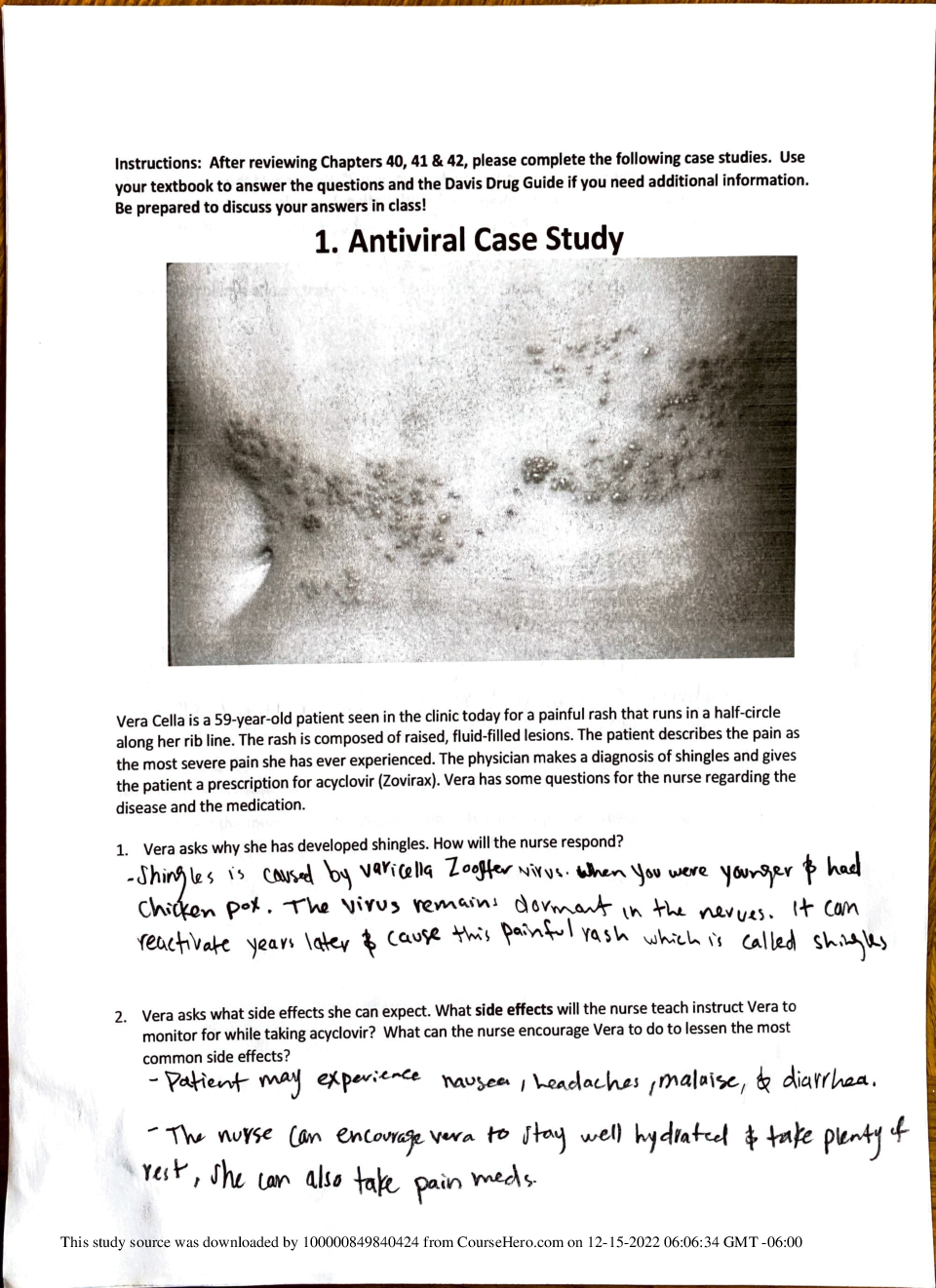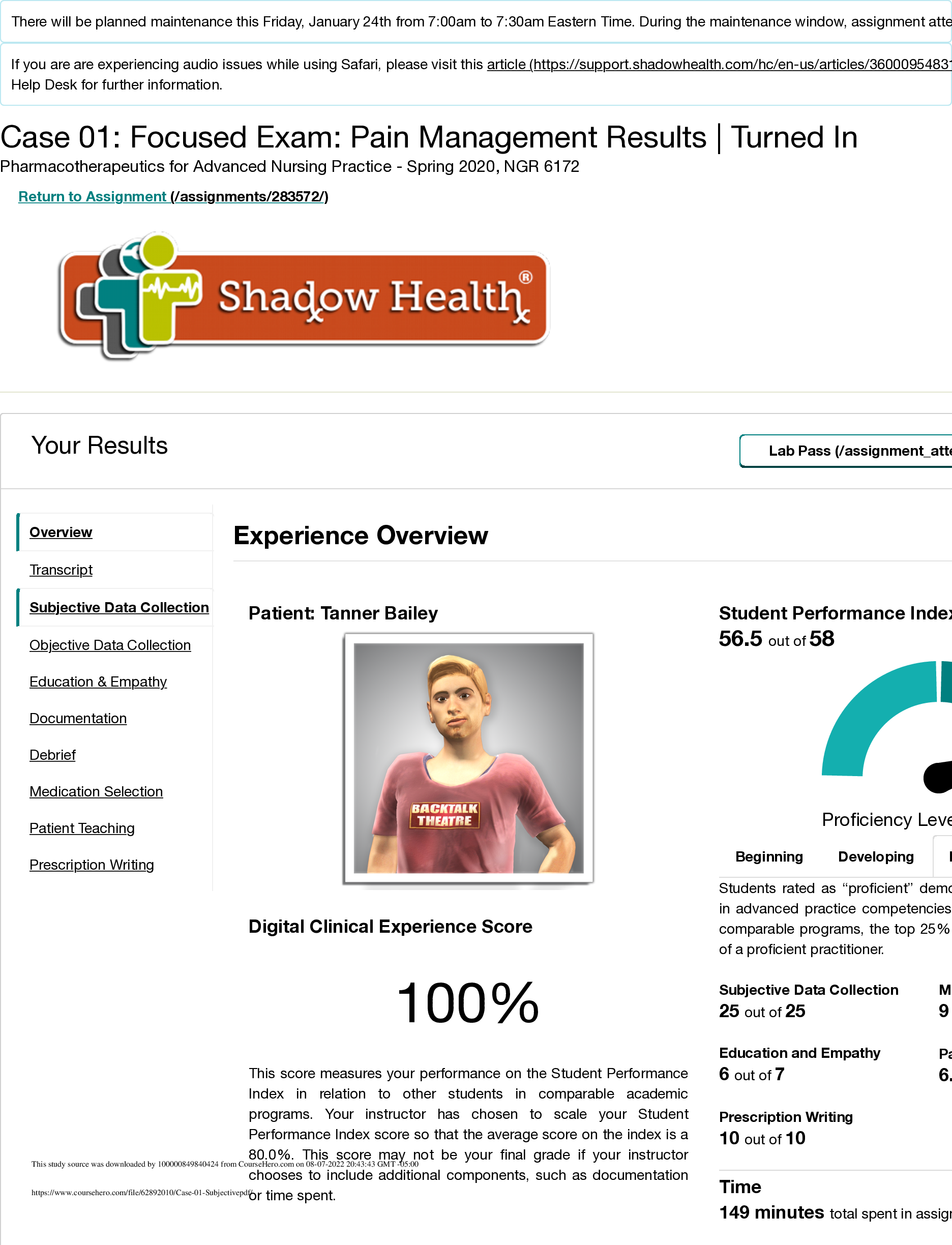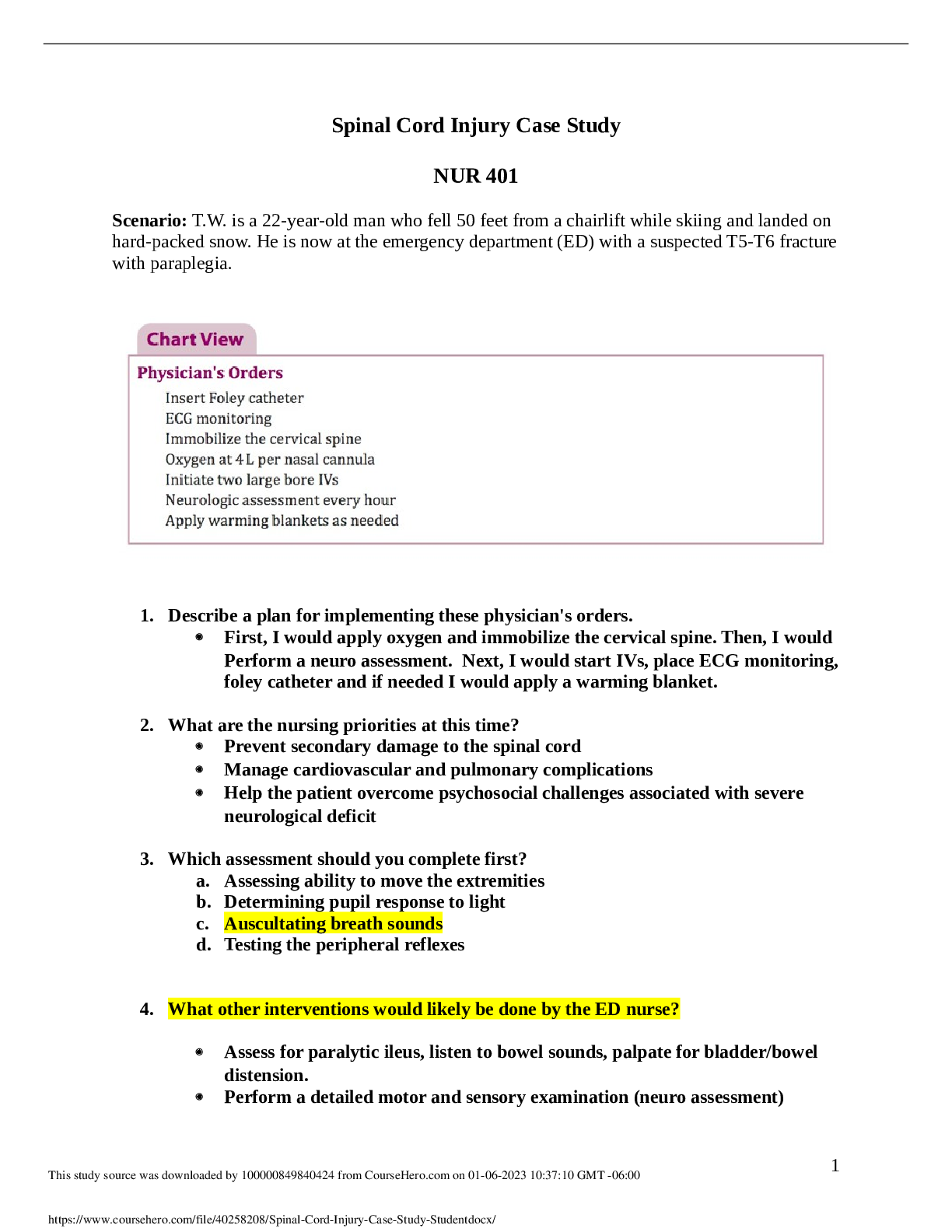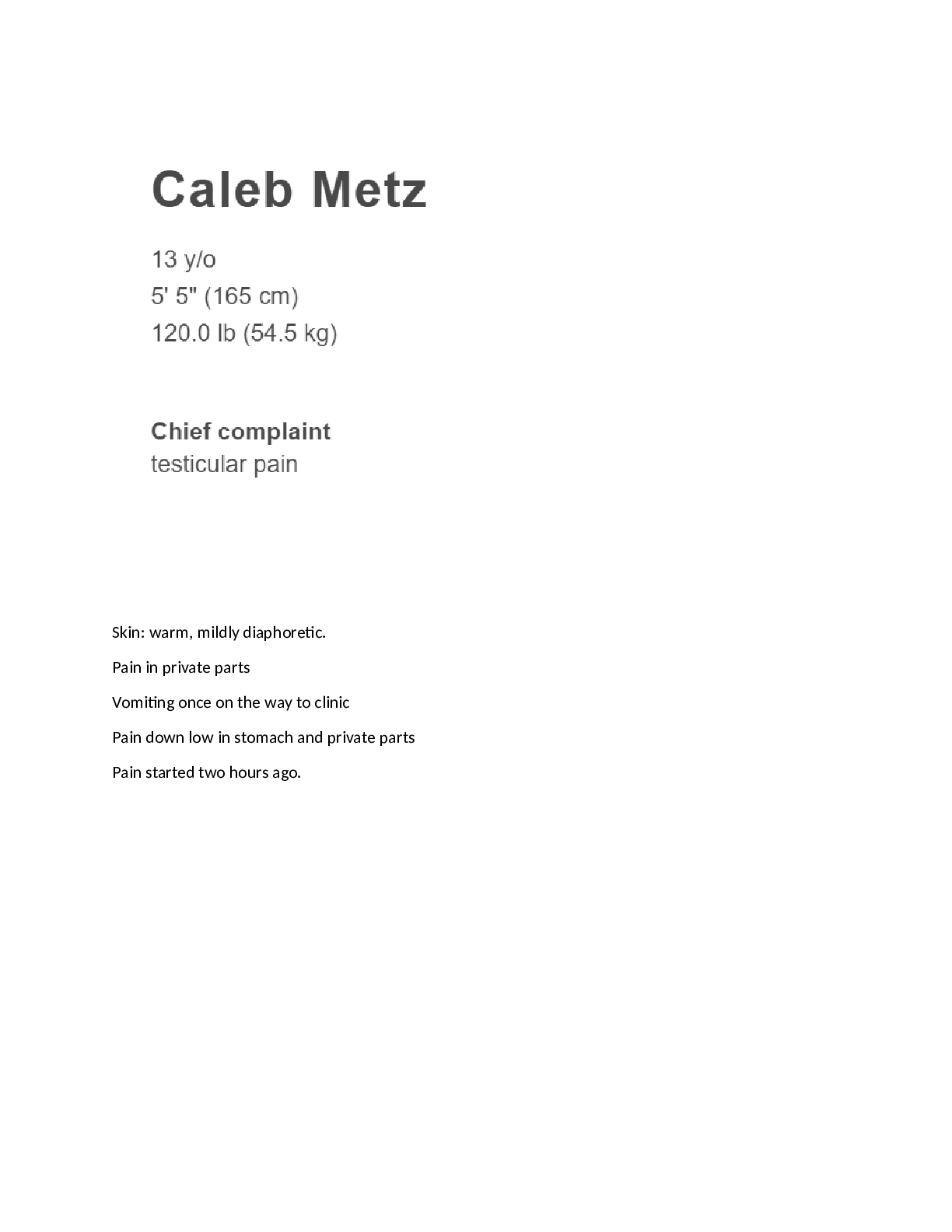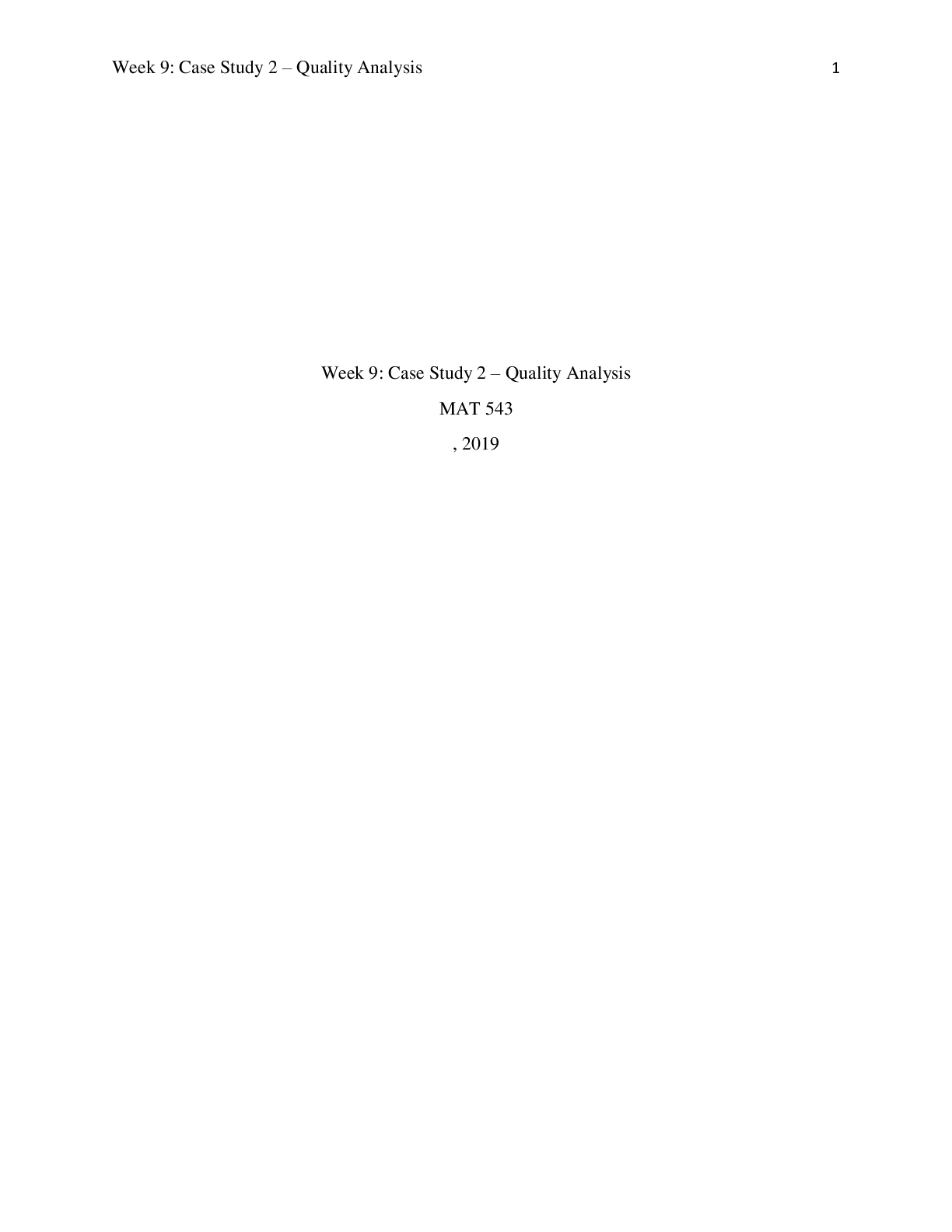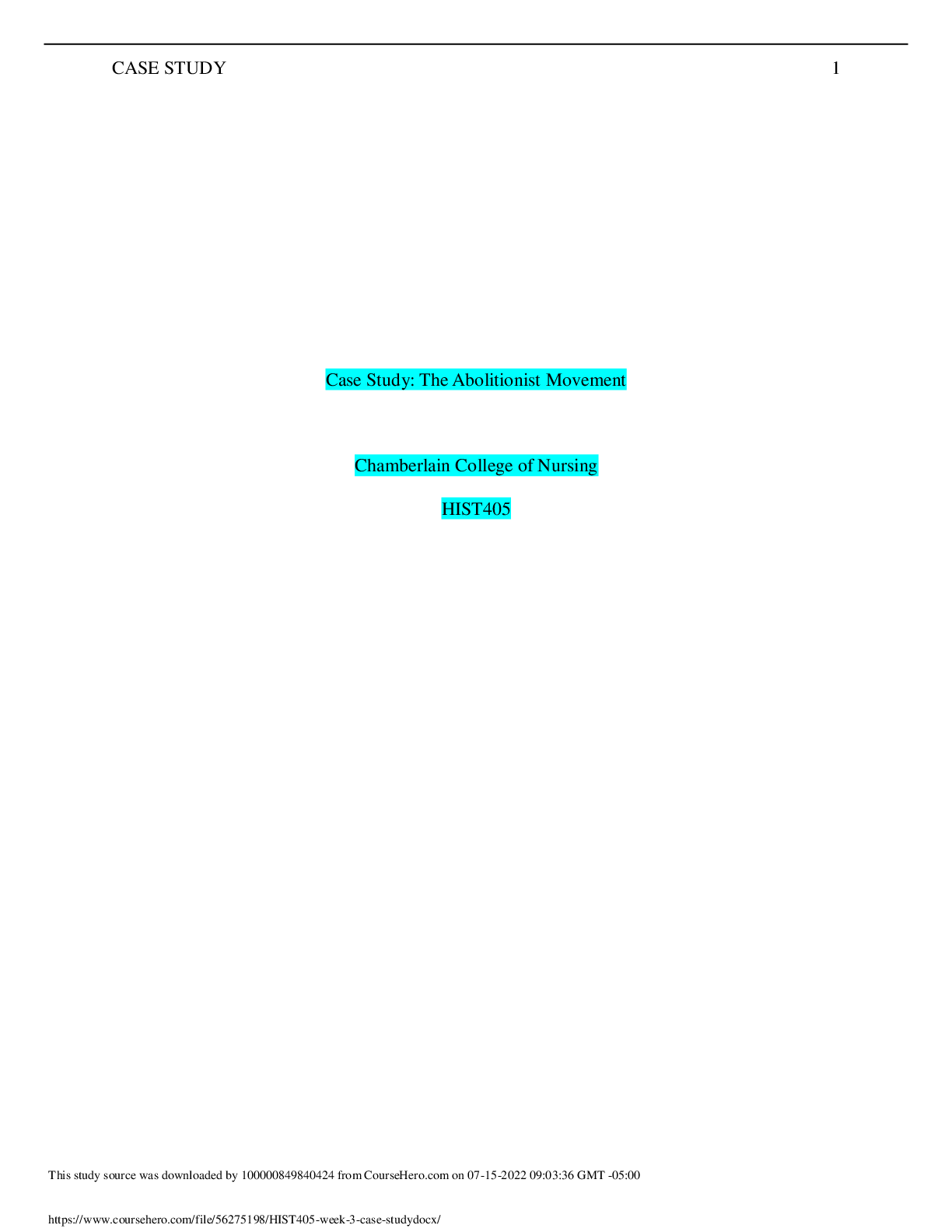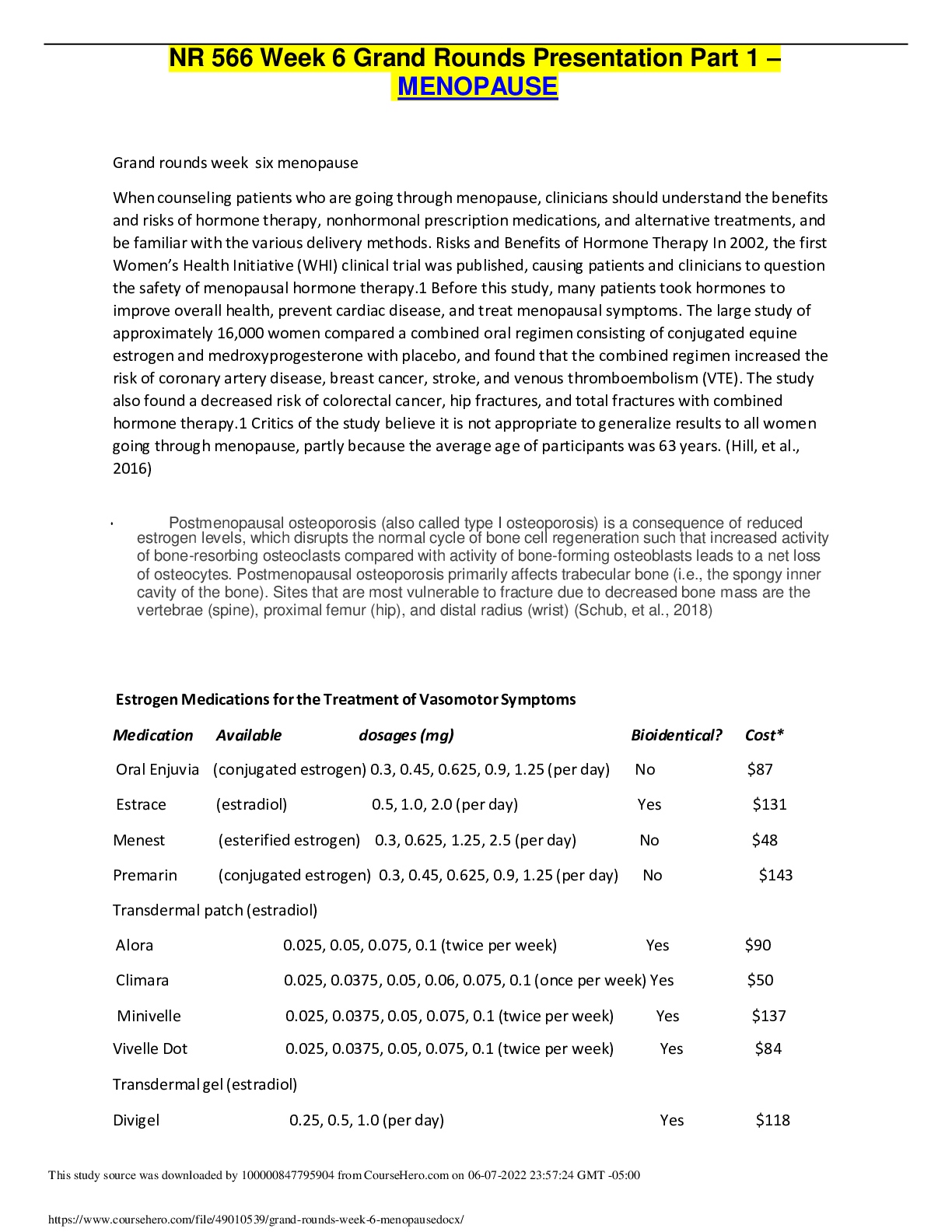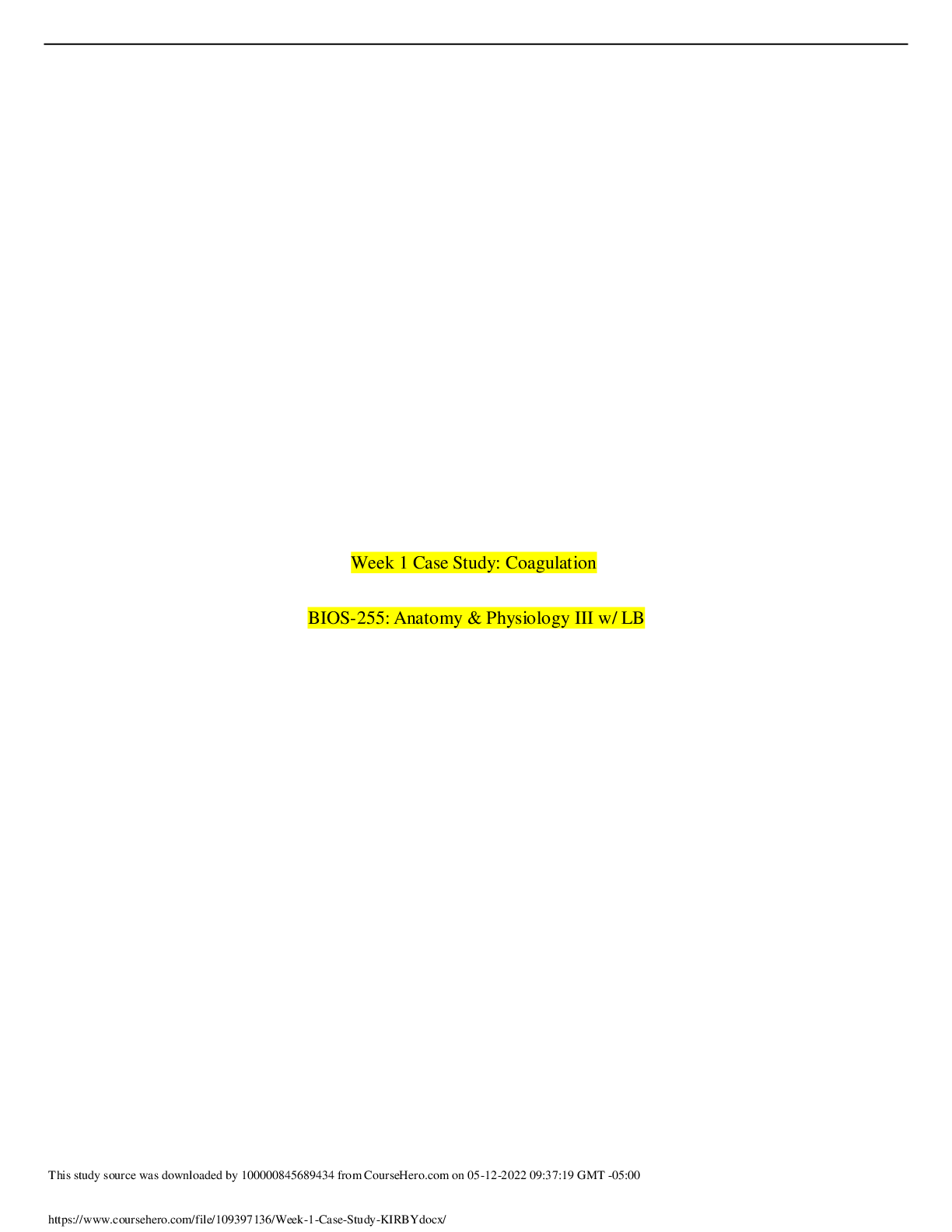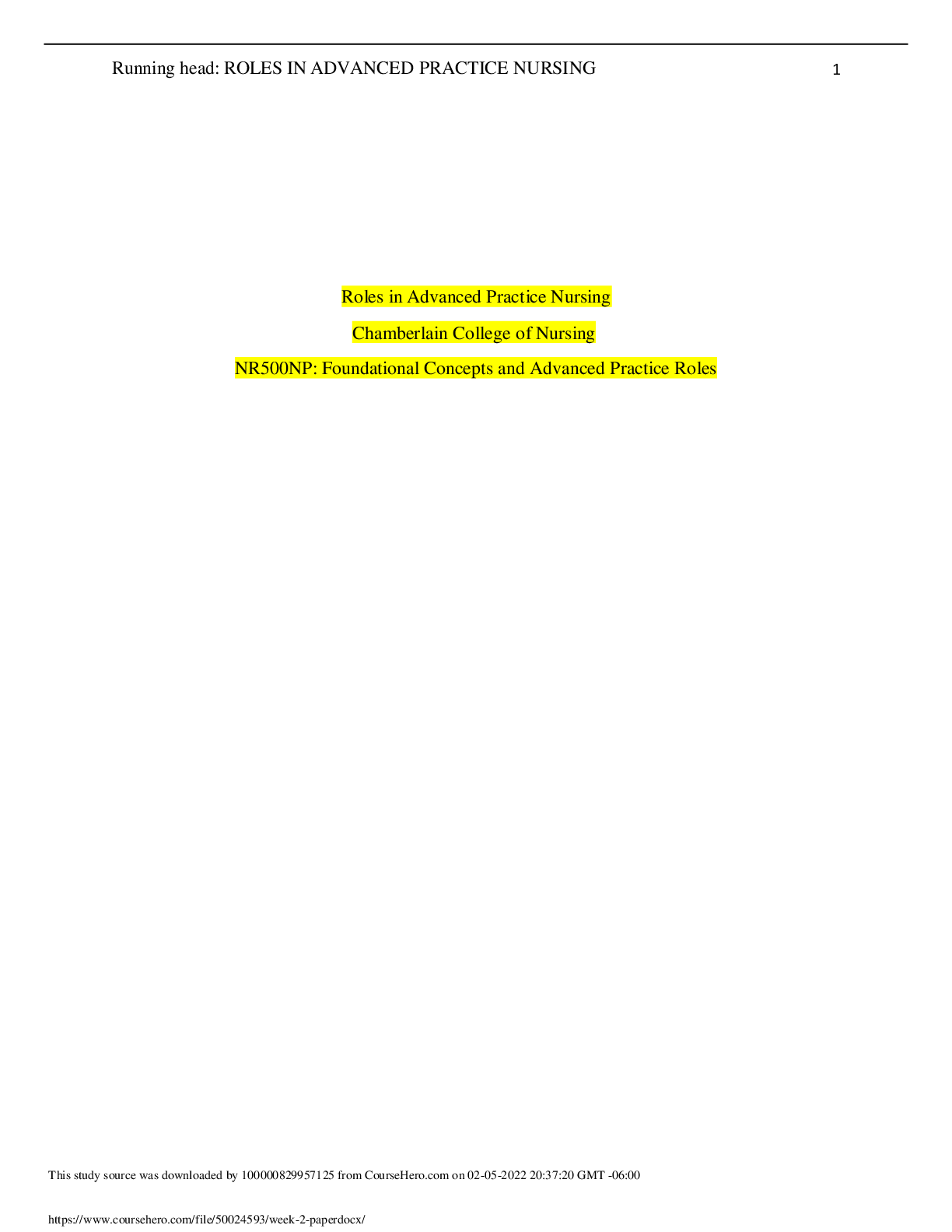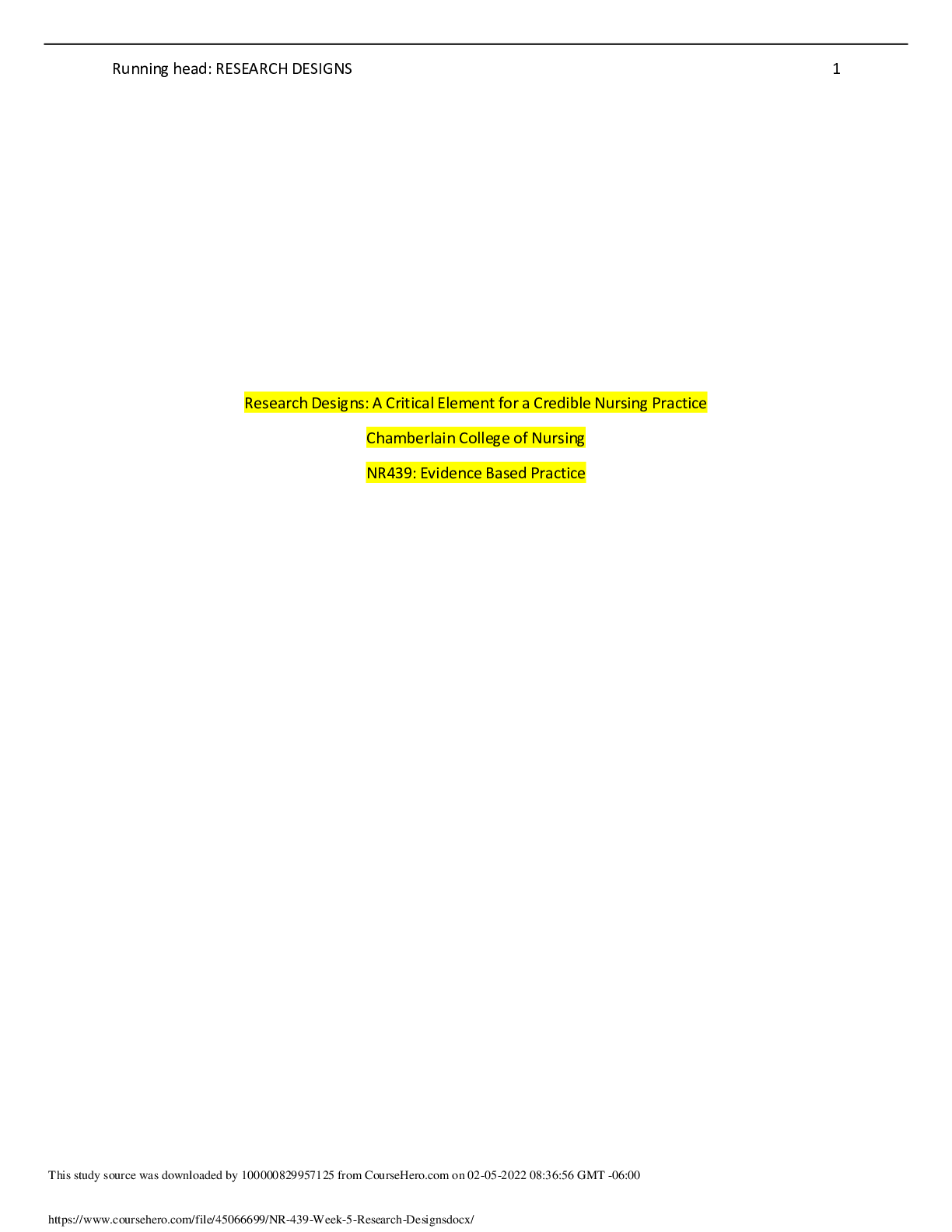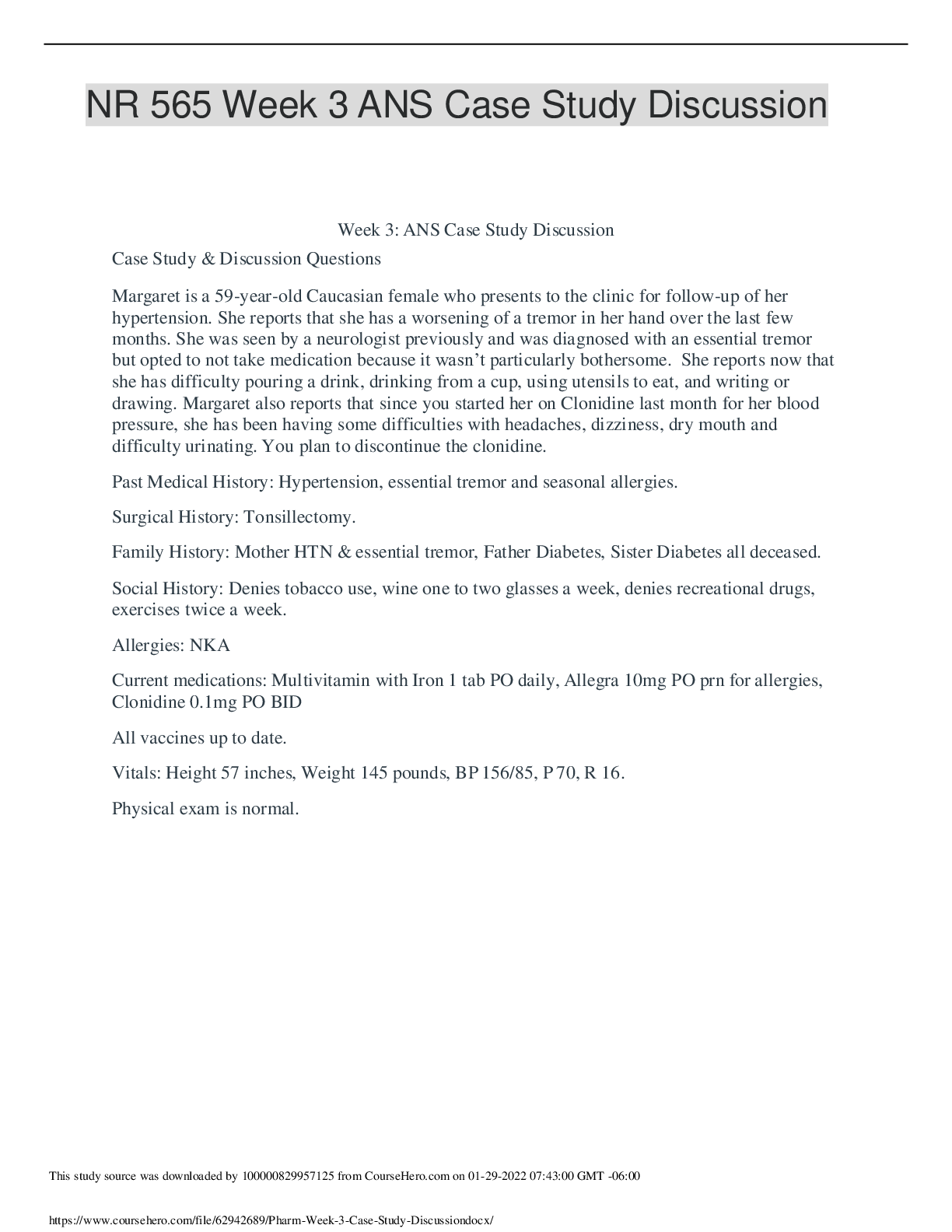BioChemistry > CASE STUDY > BIOS 390 Week 1 & 2 Labs 1 (PCR) & 2 (Gel Electrophoresis) | Already GRADED A (All)
BIOS 390 Week 1 & 2 Labs 1 (PCR) & 2 (Gel Electrophoresis) | Already GRADED A
Document Content and Description Below
BIOS390 Week 1 & 2 Labs 1 (PCR) & 2 (Gel Electrophoresis). LAB 1: Polymerase chain reaction Polymerase chain reaction (PCR) is a laboratory technique used to increase, or make many copies of, a spec... ific target region of DNA in vitro. The goal of PCR is to make enough of the target DNA region that it can be analyzed or used in some other way. For example, DNA amplified by PCR may be sent for sequencing, visualized by gel electrophoresis, or cloned into a plasmid for further experiments. PCR requires a DNA polymerase enzyme that makes new strands of DNA, using existing strands as templates. The DNA polymerase typically used in PCR is called Taq polymerase, after the heat-tolerant bacterium from which it was isolated (Thermus aquaticus). T. aquaticus lives in hot springs and hydrothermal vents. Its DNA polymerase is very heat-stable and is most active around 70°C (a temperature at which a human or E. coli DNA polymerase would be nonfunctional). This heat-stability makes Taq polymerase ideal for PCR because high temperatures are used repeatedly in PCR to denature the template DNA, or separate its strands. For tag polymerase to make DNA it must first be given a primer, a short sequence of nucleotides that provide a starting point for DNA synthesis. The primer is a short piece of single-stranded DNA determined by the scientist from a certain region of DNA. Two primers are needed in each PCR reaction and they are given sequences that will make them bind to opposite strands of the DNA template by complementary base pairing. Once the primers are fixed to the template, they can be extended by the polymerase, and the region that lies between them will get copied. The main ingredients of a PCR reaction are Taq polymerase, primers, template DNA, and nucleotides (DNA building blocks). The ingredients are assembled in a tube, along with cofactors needed by the enzyme, and are put through repeated cycles of heating and cooling that allow DNA to be synthesized. The basic steps are: 1. Denaturation (96°C): Heat the reaction strongly to separate, or denature, the DNA strands. This provides single-stranded template for the next step. 2. Annealing (55 - 65°C): Cool the reaction so the primers can bind to their complementary sequences on the single-stranded template DNA. 3. Extension (72°C): Raise the reaction temperatures so Taq polymerase extends the primers, synthesizing new strands of DNA. This cycle repeats 25 - 35 times in a typical PCR reaction, which generally takes 2 - 4 hours, depending on the length of the DNA region being copied. When successful, the target region can go from just one or two copies to billions of copies of DNA. There are many copies of the primers and many molecules of Tag polymerase floating around in the reaction, so the number of DNA molecules can roughly double in each round of cycling. LAB 2: Gel Electrophoresis Gel electrophoresis is a laboratory technique used to separate DNA fragments and other macromolecules by size and charge. Gel electrophoresis is a technique in which fragments of DNA are pulled through a gel matrix by an electric current, and it separates DNA fragments according to size. A standard, or DNA ladder, is typically included so that the size of the fragments in the PCR sample can be determined. The results of a PCR reaction are usually visualized using gel electrophoresis. DNA fragments of the same length form a "band" on the gel, which can be seen by eye if the gel is stained with a DNA-binding dye. A DNA band contains many copies of the target DNA region, not just a few copies. DNA is microscopic therefore; many copies must be present before it’s visible to the naked eye. This being a huge reason why PCR is an important tool: it produces enough copies of a DNA sequence that we can see or manipulate that region of DNA. Gel electrophoresis involves a gel: a slab of Jello-like material. Gel electrophoresis separates DNA and protein fragments based on size and why one would use agarose gel electrophoresis versus SDS-PAGE. Gels for DNA separation are often made from a polysaccharide called agarose, which comes as dry, powdered flakes. When the agarose is heated in a buffer (water with some salts in it) and allowed to cool, it will form a solid, slightly squishy gel. At the molecular level, the gel is a matrix of agarose molecules that are held together by hydrogen bonds that form pores and is used for larger fragments of DNA, > 50 bp or Sodium Dodecyl Sulfate (SDS-PAGE) which form even smaller pores and is used for tiny fragments of DNA and or proteins. SDS is a chemical agent that denatures proteins, disrupting any non-covalent interactions they may have. This makes it, so the charge of proteins is not a factor when they’re separating out onto the gel, and they’re only being separated strictly by size. PAGE or Polyacrylamide Gel Electrophoresis, which is the substance that the gel’s made from. Remember that SDS-PAGE is for small DNA or protein cells (S for small and S for SDS) and agarose is for larger fragments of DNA. At one end, the gel has pocket-like indentations called wells, which are where the DNA samples will be placed. Before the DNA samples are added, the gel must be placed in a gel box. One end of the box is hooked to a positive electrode (anode), while the other end is hooked to a negative electrode (cathode). The main body of the box, where the gel is placed, is filled with a salt- containing buffer solution that can conduct current. To power this you’ll need a certain type of battery to connect everything within the box that contains the gel electrophoresis apparatus with a typical voltage in the range of 80 - 120 V. The buffer fills the gel box to a level where it just barely covers the gel. The end of the gel with the wells is positioned towards the cathode. The end without wells (towards which the DNA fragments will migrate) is positioned towards the anode. Dye will be mixed in with your samples, so you can see them as they’re running which will help you track the movement of the bands later. When the gel is in the box, each of the DNA samples to be examined is carefully pipetted into one of the wells. One well is reserved for a DNA ladder, a standard reference that contains DNA fragments of known lengths. Next, the power to the gel box is turned on (gel is running), and current begins to flow through the gel. The DNA molecules have a negative charge because of the phosphate groups in their sugar-phosphate backbone, so they start moving through the matrix of the gel towards the positive pole (anode). As the gel runs, shorter pieces of DNA will travel through the pores of the gel matrix faster than longer ones. After the gel has run for a time, the shortest pieces of DNA will be close to the positive end of the gel, while the longest pieces of DNA will remain near the wells. A well-defined “line” of DNA on a gel is called a band. Each band contains many DNA fragments of the same size that have all traveled as a group to the same position. A single DNA fragment (or even a small group of DNA fragments) would not be visible by itself on a gel. By comparing the bands in a sample to the DNA ladder, we can determine their approximate sizes. References Khan Academy. (2013, September 17). Gel electrophoresis | Chemical processes | MCAT | Khan Academy [Video file]. Retrieved from https://www.youtube.com/watch? v=mN5IvS96wNk Khan Academy. (2016, June 2). Polymerase chain reaction (PCR) | Biomolecules | MCAT | Khan Academy [Video file]. Retrieved from https://www.youtube.com/watch? time_continue=2&v=nHi-3jP6Mvc [Show More]
Last updated: 1 year ago
Preview 1 out of 4 pages

Reviews( 0 )
Document information
Connected school, study & course
About the document
Uploaded On
Nov 07, 2022
Number of pages
4
Written in
Additional information
This document has been written for:
Uploaded
Nov 07, 2022
Downloads
0
Views
52



